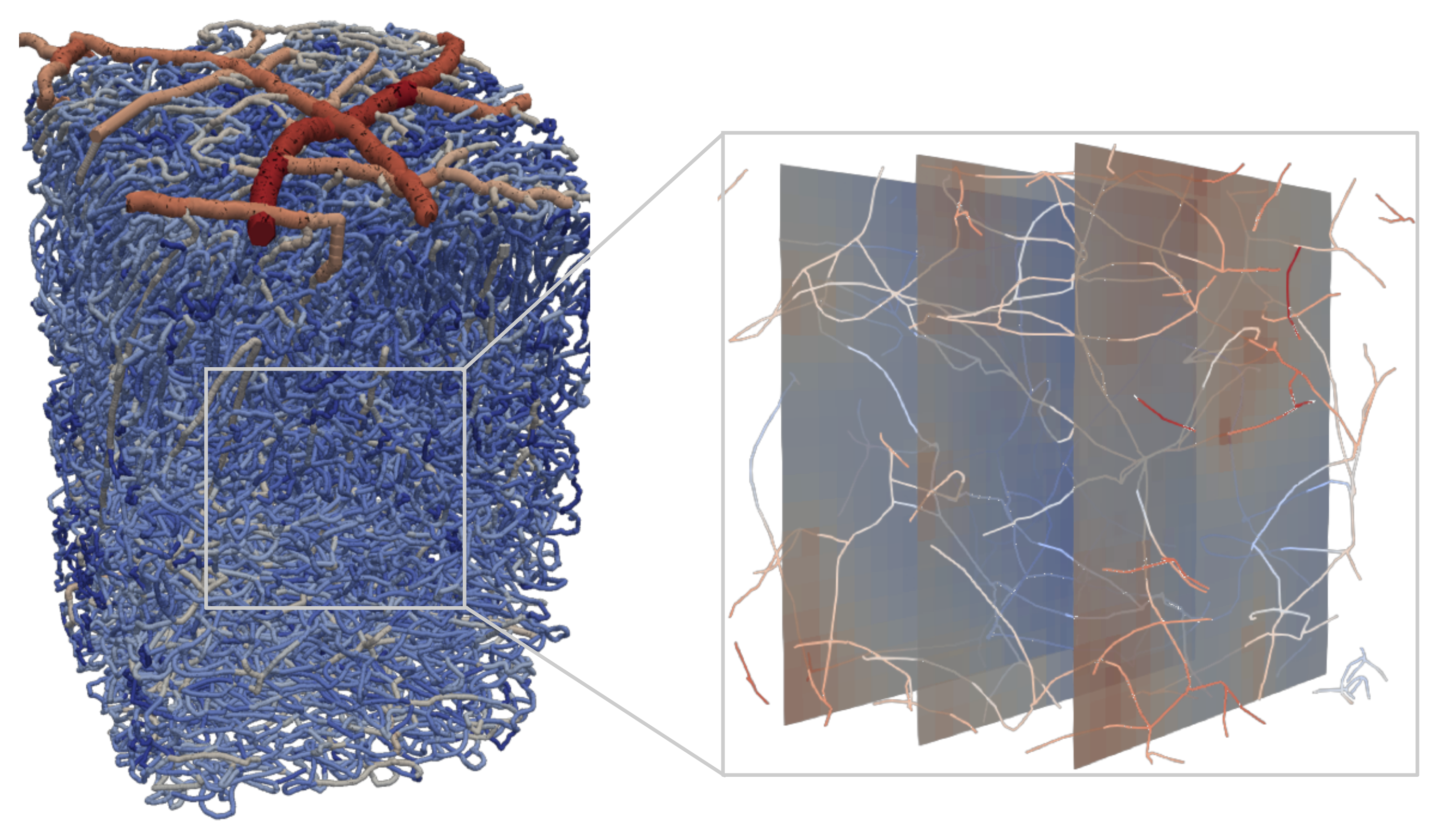Stroke across scales – impact on blood perfusion and oxygen supply in the brain – a computational perspective
Microvascular disturbances are common during neurological disorders. These disturbances range from single capillary occlusions (microstroke) to the occlusion of a major feeding artery (ischemic stroke). Assessing the impact of such microvascular alterations experimentally is challenging, which poses a challenge to advancing our understanding of disease origins and treatment. Targeted computational model development is a promising tool to close this gap in knowledge. In the context of microstrokes, we use our bi-phasic blood flow model and our model for microvascular oxygen transport to show that microscale alterations matter for mesoscale blood and oxygen supply. The impact of vascular variability during ischemic stroke is addressed in our unique simulation framework, which directly incorporates structural and functional in vivo data from mouse experiments via inverse modeling. By highlighting the relevance of arterial flow loops during ischemic strokes, we propose that accounting for vascular variability in stroke treatments can be beneficial for stroke outcomes.
- Characteristics of microvascular flow
- Computational modelling microvascular flow
- Connecting simulations and biomedical experiments
- Topology of vascular networks in the brain
Date & Time: April 1st at 16:00 CEST (Central European Summer Time)
Link to recorded Webinar
Franca Schmid is a Group Leader at the ARTORG Center for Biomedical Engineering Research at the University of Bern. After obtaining her PhD in Mechanical Engineering at ETH Zurich in 2017, she deepened her biological expertise through a postdoc at the University of Zurich and a research visit at the Brain and Spine Institute in Paris in 2023. She develops computational methods to understand the brain’s energy supply during health and disease. Her models are applicable to realistic vascular structures and address questions that go beyond what is accessible in biomedical imaging. The most recent foci of her team are on microvascular oxygen transport and ischemic strokes. Contributing to her ultimate goal of improving the diagnosis and treatment of neurological disorders and, thereby, maintaining healthy brain function in an aging population.


